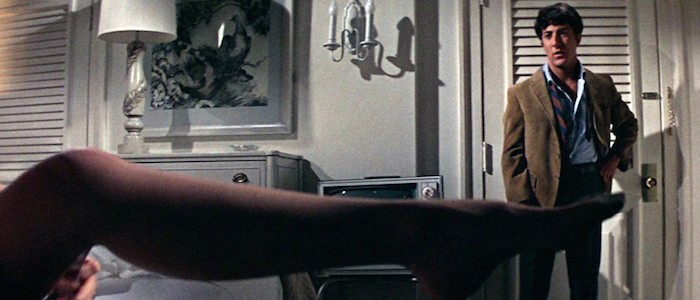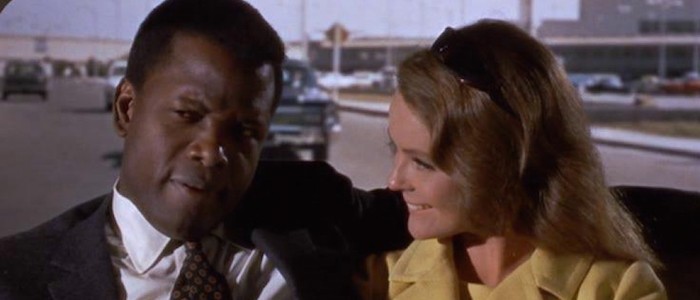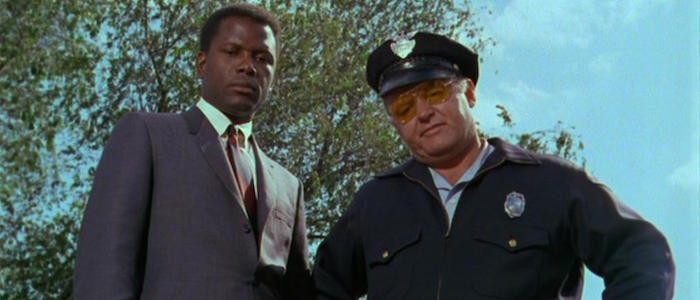Why 'Pictures At A Revolution' Should Be Netflix's Next Documentary Series
We may receive a commission on purchases made from links.
Netflix's latest documentary is an ambitious affair that combines legendary directors, World War II, and the disembodied voice of Meryl Streep. Five Came Back is a multi-part tale of five directors who temporarily left Hollywood to create propaganda for the U.S. military in the 1940s. It's based on the 2014 book by film journalist Mark Harris, and it managed to snag modern movie icons like Steven Spielberg, Francis Ford Coppola, and Guillermo del Toro as talking heads. Streep serves as the narrator.It's easy to see why Netflix went all-out on this incredible piece of movie history. But hopefully, it's not done with Harris just yet. Because he wrote another book about Hollywood history concerning a quintet, and it's begging to be the next Netflix docuseries.
The Pitch
Before he entered the trenches of WWII history with Five Came Back, Harris published Pictures at a Revolution: Five Movies and the Birth of the New Hollywood. This 2008 book was a curious case study – it examined the eventual Best Picture nominees of 1967. Sounds pretty specific, right? But 1967 was an unusually stacked year. Bonnie and Clyde, The Graduate, In the Heat of the Night, Guess Who's Coming to Dinner, and Doctor Dolittle (okay, they weren't all gems) were up for the top prize. Harris didn't just catalog some fascinating behind-the-scenes stories from these productions. He also used them to explain the collapse of the old studio system and rise of a new class of young, rebellious filmmakers.By "old studio system," I mean the period spanning the 1920s through the 1960s, when a small handful of movie studios ruled Hollywood ("The Big Five" were Fox, Paramount, Warner Brothers, RKO, and MGM). They kept actors under strict contracts, produced everything in-house, and, for a time, directly controlled their distribution into movie theaters. This system had a slow, painful death that finally arrived in the late 1960s. Immediately after this demise, a new generation of hippies and film school grads sprang up to rebuild the industry from scratch. You probably know some of their names – Spielberg, Coppola, Lucas, Scorsese.Pictures at a Revolution unfolds right in the middle of those two heavily studied periods of Hollywood history. That's reason enough to check it out, but the book offers so many compelling tangents, it's hard to pick just one to highlight. The unbelivably catastrophic set of Doctor Dolittle helps illustrate why movie musicals crashed and burned. Guess Who's Coming to Dinner and In the Heat of the Night provide an opportunity to discuss Sidney Poitier's uncomfortable position in both Hollywood and the civil rights movement. The Graduate gamely grapples with the concept of "leading man." And if you're wondering why the morality code that stifled movies for decades finally dropped dead, look no further than that spray of Bonnie and Clyde bullets.Pictures at a Revolution is a fantastic book that any movie lover should read. But why does it deserve a film adaptation – and the wider audience that comes with that?
Movies Are in Another Tight Spot
This is not the best time to be in the movie business. Experts have been forecasting an industry apocalypse seemingly since the dawn of the new millennium. As the dismal 2016 summer box office numbers poured in, media analyst Hal Vogel told Variety, "The theater business has weaker prospects going forward than at any time in the last 30 years." Blockbuster pioneers Spielberg and George Lucas predicted an implosion (and $25 movie tickets!) in 2013. Harris himself penned a eulogy in 2011 with his GQ article "The Day the Movies Died."They're not just being dramatic. Back in 1940, over half of the adult population went to the movies once a week. Today, less than 10% does. Much of that shift has been chalked up to cold hard capitalism. Why shell out $35 for a movie ticket, popcorn, and soda when you could renew your streaming subscription for $10?But money isn't the only factor at play here, and this makes Pictures at a Revolution incredibly relevant. There are many reasons why the old studio system bit the dust, but chief among them was a failure to connect with the new generation. Sound familiar? Most of the alarm bells in 2017 are being sounded over millennial moviegoers, who are increasingly staying home to stream. But modern Hollywood can't just blame its problems on damn fickle kids with their damn iPhones. It's also being incredibly stupid about how it reaches those audience members. Sequels, remakes, and franchises undeniably make money, but they've saturated the market so thoroughly that they've begun cannibalizing each other's profits. And in its quest to pump out tentpoles with international potential – "Hulk smash" translates in every language – Hollywood has failed to make distinctive, enticing wide releases for millennials who already have an endless catalog of Hulu, HBO, and (of course) Netflix titles at their fingertips.That's not the only missed connection between the studios and potential audiences. Women and minority moviegoers are absolutely crucial to the industry's success, but films still sideline them onscreen. This lack of representation also plays out in the Pictures at a Revolution pages dedicated to Poitier, who had an arduous career as essentially the only black man allowed to headline movies at the time.
The industry had to change then, and it needs to change now. The question is who's going to lead the charge this time. Sounds like a perfect prompt for some documentary talking heads, no?
But It’s Not All About Box Office Numbers
Of course, no one wants to watch a documentary just for the movie attendance analysis. The challenge of any Hollywood history is to entertain without being a tabloid. Neither too stuffy nor too trashy. It's a difficult balancing act, but Pictures at a Revolution manages to blend striking social commentary with some undeniably sensational stories.The most obvious subject here is Doctor Dolittle. The production of this critically scorned musical (that Robert Downey Jr. is now set to revive) is the stuff of legend. That's largely thanks to its star Rex Harrison. The volatile Englishman was known for his temper, ego, and alcohol abuse. Subsequently, he provides one horrific story after the next. The most outlandish one is relayed on page 282: "On another occasion, Harrison appalled a room full of the Hollywood establishment... at a party at the Los Angeles restaurant the Bistro, singing obscene lyrics about his penis to the tune of 'I've Grown Accustomed to Her Face' while [Rachel] Roberts [his wife], who was not wearing underwear, did handstands."The nightmarish reports from the set of Doctor Dolittle are uncomfortably fascinating. But the book also incorporates purely compelling trivia from the enshrined classics like Bonnie and Clyde and The Graduate. There's the case of the disappearing threesome scene from Bonnie and Clyde, which would have presented Clyde Barrow as bisexual. (Whether Warren Beatty or director Arthur Penn nixed this is still a matter of contention.) And the list of almost Mrs. Robinsons is incredible. Patricia Neal, Ava Gardner, and Doris Day were all, at one point, pursued for the role.Would Doris Day consent to talk about this on camera? I have no idea. But it would make for one hell of an interview.
It’s Full of Fantastic Profiles
Pictures at a Revolution finds a slew of movie icons at the start or crossroads of their careers. This gives Harris the opportunity to sketch a series of excellent mini bios. Warren Beatty is the playboy producer who wants to change the entire scene. Dustin Hoffman and Faye Dunaway are the "difficult" theater actors who made indelible 1967 movie debuts. Katharine Hepburn and Spencer Tracy are the tight-lipped old Hollywood royalty, struggling to reconfigure their careers. There's also Mike Nichols, the improv comedian turned director who molded The Graduate into something quite different from the WASPy Charles Webb novel. He'll be the subject of Harris's next book.But the Poitier profile is the real standout.The actor is painted as a man who could never make anyone happy. His friends like Harry Belafonte chastised him for taking neutered roles in Lilies of the Field and Guess Who's Coming to Dinner, urging him to use his unique status in Hollywood as a platform for activism. But Poitier knew full well that any performance or statement too pointed would anger white audiences, and thus threaten his job. He was a man in an unwinnable situation. While Harris is certainly not the first person to delve into Poitier's story – PBS and Poitier himself both beat him to that – it's a story that bears repeating, especially as the film industry struggles to correct its diversity problem.
Play This Picture
In more ways than one, the turbulent time described in Pictures at a Revolution mirrors the present. The movie industry is once again stumbling, and you wouldn't be crazy for connecting the social unrest of the 1960s to some of our current headlines. Pictures at a Revolution has all the material necessary for an absorbing, relevant documentary. It also concerns a time that's not as well covered as prosperous studio system era, or the thrilling industry rebirth that followed its crash. And since those who ignore history are doomed to repeat it, producers would be wise to greenlight this project.
